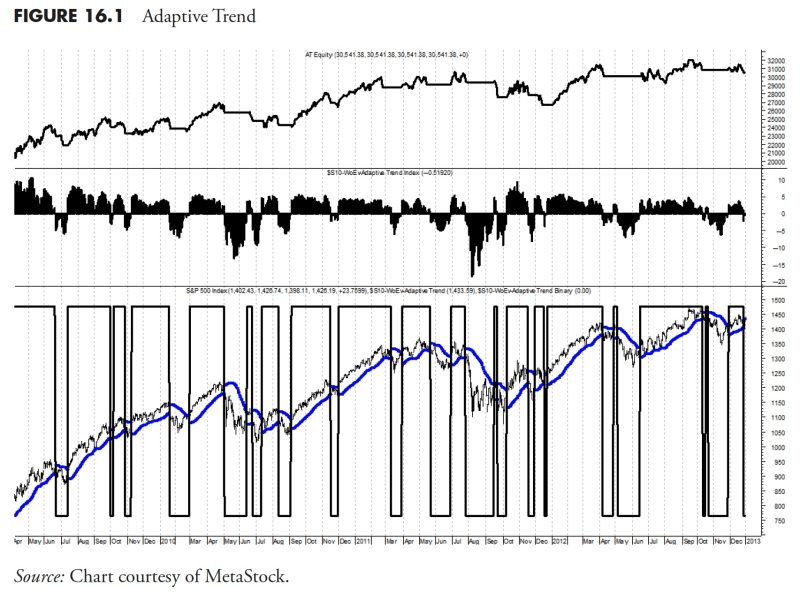June 7, 2024
Transforming Trend-Following Rules into Action: The Essential Guide for Money Management – Part 8
 Trend-following strategies rely on identifying the direction of a financial market and taking positions that align with that trend. The premise is simple – buy assets that are trending up and sell assets that are trending down. This approach is based on the belief that markets exhibit momentum and that trends tend to persist over time.
To put trend-following to work effectively, traders and investors need to implement a set of rules that guide their decision-making process. These rules can help mitigate emotional biases and ensure disciplined execution of the strategy. Here are some key elements to consider when putting trend-following into practice:
1. Define the Trend: The first step in trend-following is to identify the direction of the trend. This can be done using technical analysis tools such as moving averages, trendlines, or price patterns. A simple yet effective method is to use a moving average crossover strategy, where a shorter-term moving average crossing above a longer-term moving average signals an uptrend, and vice versa for a downtrend.
2. Set Entry and Exit Points: Once the trend is established, traders need to determine at what point to enter and exit the market. Entry points can be based on breakouts above resistance levels or pullbacks to key support levels. Stop-loss orders are crucial in trend-following strategies to limit potential losses if the trend reverses. Trailing stop-loss orders can also be used to lock in profits as the trend continues.
3. Manage Risk: Risk management is a critical aspect of trend-following strategies. Position sizing should be based on the level of risk that a trader is willing to take on each trade. One common approach is to risk a fixed percentage of the trading capital on each trade, typically ranging from 1% to 3%. This helps protect the trading account from large drawdowns and ensures sustainable long-term returns.
4. Monitor and Adjust: Markets are dynamic and trends can change quickly. It is essential for traders to monitor their positions regularly and adjust their strategy as needed. This may involve tightening stop-loss levels, taking partial profits, or reevaluating the trend direction based on new market developments.
5. Stay Disciplined: Emotions can often cloud judgment and lead to impulsive decision-making. To be successful in trend-following, traders must remain disciplined and stick to their predefined rules. This means avoiding the temptation to deviate from the strategy based on fear or greed and focusing on the long-term objectives.
In conclusion, trend-following can be a powerful strategy for capturing market trends and generating consistent returns over time. By implementing a rules-based approach that defines the trend, sets clear entry and exit points, manages risk effectively, monitors positions, and maintains discipline, traders can put trend-following to work in a systematic and methodical manner. While no strategy is foolproof, following a well-defined plan can help enhance the chances of success in the dynamic world of financial markets.
Trend-following strategies rely on identifying the direction of a financial market and taking positions that align with that trend. The premise is simple – buy assets that are trending up and sell assets that are trending down. This approach is based on the belief that markets exhibit momentum and that trends tend to persist over time.
To put trend-following to work effectively, traders and investors need to implement a set of rules that guide their decision-making process. These rules can help mitigate emotional biases and ensure disciplined execution of the strategy. Here are some key elements to consider when putting trend-following into practice:
1. Define the Trend: The first step in trend-following is to identify the direction of the trend. This can be done using technical analysis tools such as moving averages, trendlines, or price patterns. A simple yet effective method is to use a moving average crossover strategy, where a shorter-term moving average crossing above a longer-term moving average signals an uptrend, and vice versa for a downtrend.
2. Set Entry and Exit Points: Once the trend is established, traders need to determine at what point to enter and exit the market. Entry points can be based on breakouts above resistance levels or pullbacks to key support levels. Stop-loss orders are crucial in trend-following strategies to limit potential losses if the trend reverses. Trailing stop-loss orders can also be used to lock in profits as the trend continues.
3. Manage Risk: Risk management is a critical aspect of trend-following strategies. Position sizing should be based on the level of risk that a trader is willing to take on each trade. One common approach is to risk a fixed percentage of the trading capital on each trade, typically ranging from 1% to 3%. This helps protect the trading account from large drawdowns and ensures sustainable long-term returns.
4. Monitor and Adjust: Markets are dynamic and trends can change quickly. It is essential for traders to monitor their positions regularly and adjust their strategy as needed. This may involve tightening stop-loss levels, taking partial profits, or reevaluating the trend direction based on new market developments.
5. Stay Disciplined: Emotions can often cloud judgment and lead to impulsive decision-making. To be successful in trend-following, traders must remain disciplined and stick to their predefined rules. This means avoiding the temptation to deviate from the strategy based on fear or greed and focusing on the long-term objectives.
In conclusion, trend-following can be a powerful strategy for capturing market trends and generating consistent returns over time. By implementing a rules-based approach that defines the trend, sets clear entry and exit points, manages risk effectively, monitors positions, and maintains discipline, traders can put trend-following to work in a systematic and methodical manner. While no strategy is foolproof, following a well-defined plan can help enhance the chances of success in the dynamic world of financial markets.
If you would like to delve into the world of investment topics , go to our partner project Wall Street Wizardry


